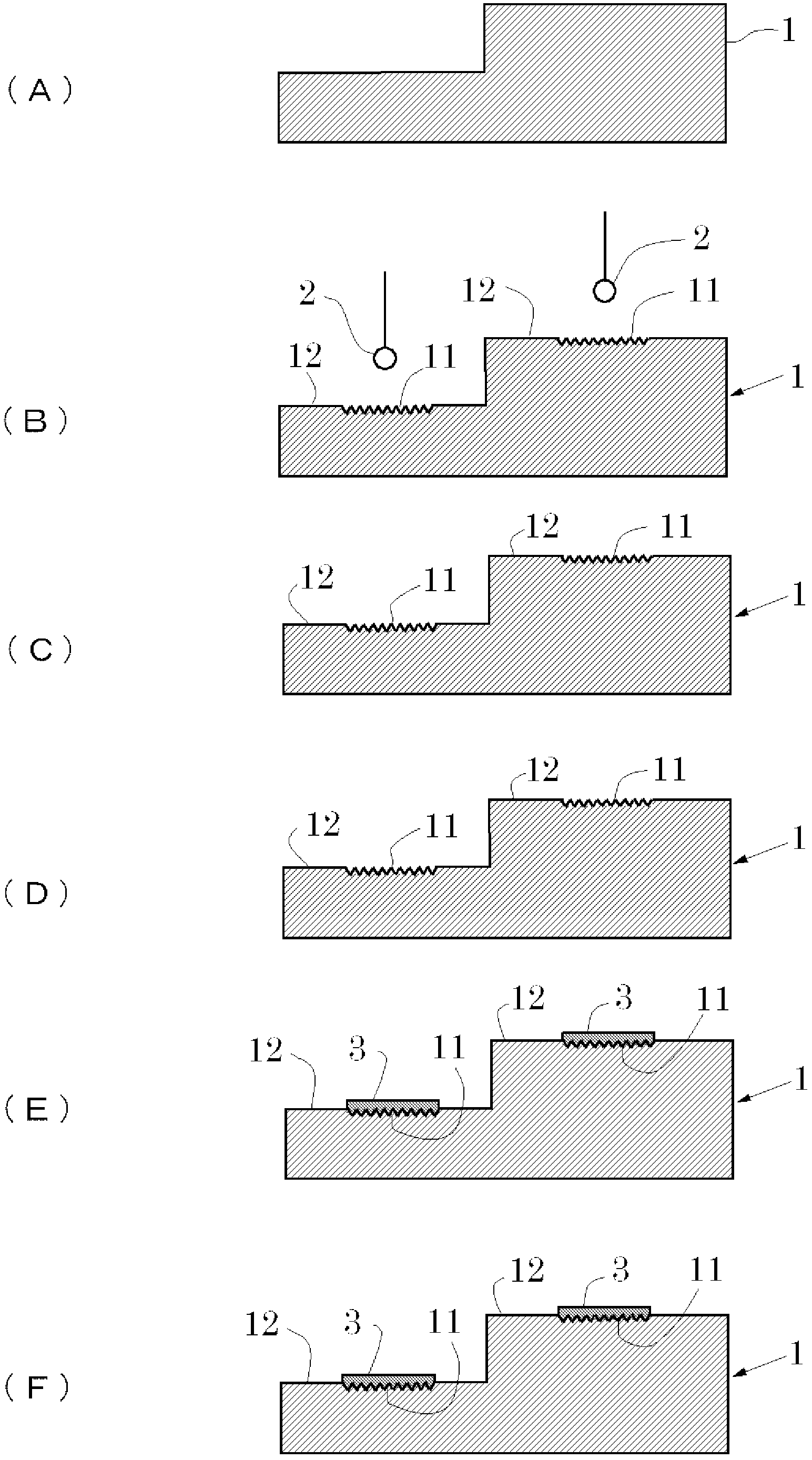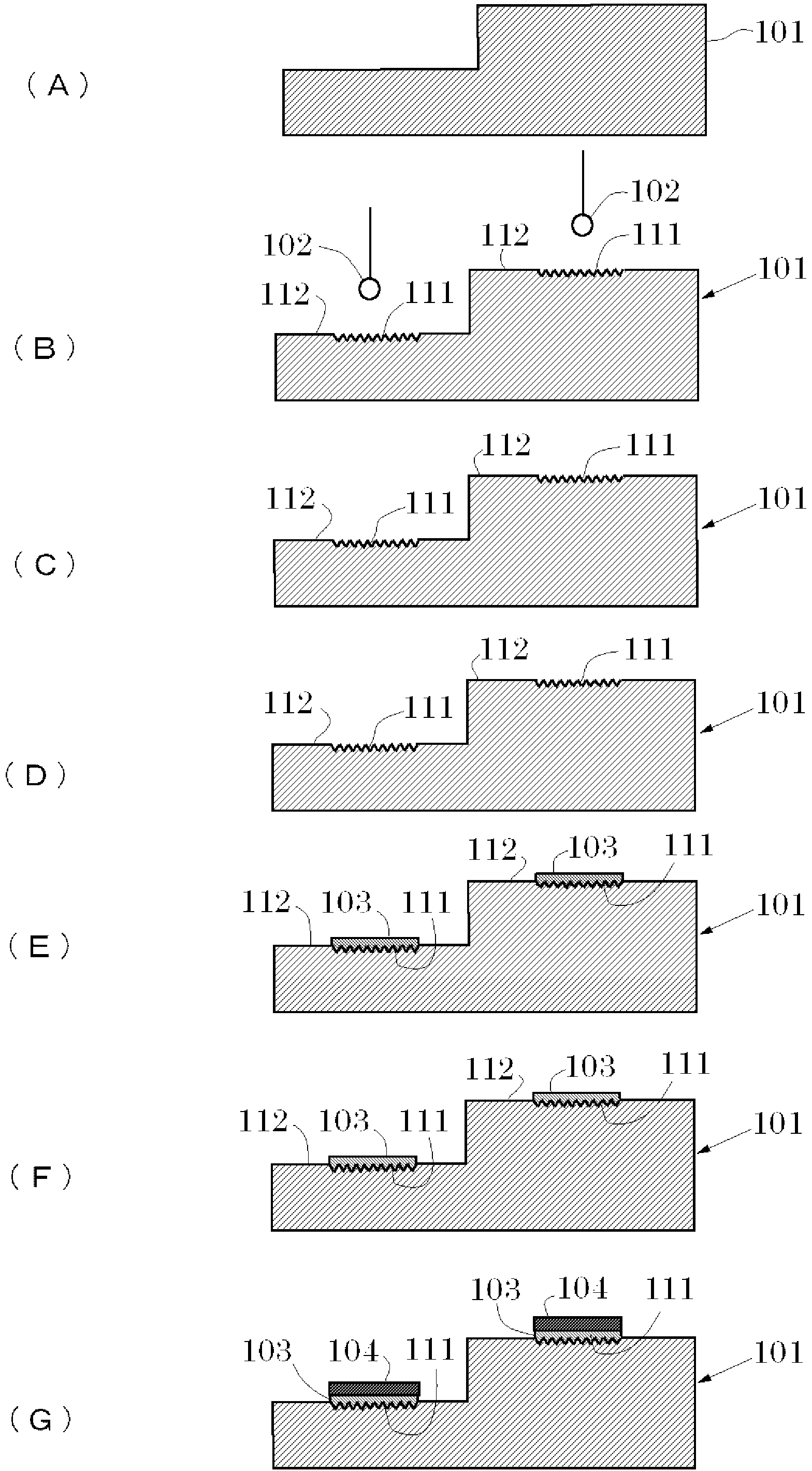Method of producing formed circuit component
A manufacturing method and a technology for forming circuits, which are applied in the fields of printed circuit manufacturing, printed circuit parts, printed circuits, etc., can solve problems such as roughening, laboriousness, and reduced insulation, and achieve enhanced adhesion, improved durability or durability. Thermal properties, the effect of improving the anchoring effect
- Summary
- Abstract
- Description
- Claims
- Application Information
AI Technical Summary
Problems solved by technology
Method used
Image
Examples
Embodiment 1
[0057]An aromatic polyamide (6T nylon) (manufactured by Otsuka Chemical Co., Ltd. "#NM114HW") mixed with titanium oxide and calcium titanate whiskers as a filler was injection-molded to form a bulk-shaped base 1 . Next, the laser beam 2 is selectively irradiated to the circuit portion 11 of the substrate 1 to modify and roughen the surface. The laser beam 2 uses the second harmonic wave with a wavelength of 532nm, and the output is 95% of 6W. According to the scanning speed of the galvanometer mirror, the scanning speed is 500mm / s, and the pulse frequency is set at 40KHz, and only one scanning is performed. It was confirmed that the 10-point average of the roughness of the surface that can be roughened by this was about 84 μm.
[0058] Then the substrate 1 is subjected to alkali washing, and then the surface is activated. Here, the alkali cleaning is performed, for example, by immersing the substrate 1 in an aqueous sodium hydroxide solution having a temperature of 50° C. and...
Embodiment 2
[0063] An aromatic liquid crystal polymer ("Bectra #C820" manufactured by Polyplastics Co., Ltd.) mixed with 50% by weight of calcium pyrophosphate as a filler was injection-molded to form a bulk-shaped substrate 1 . Next, the laser beam 2 is selectively irradiated to the circuit portion 11 of the substrate 1 to modify and roughen the surface. The laser beam 2 uses the second harmonic wave with a wavelength of 532nm, and the output is 95% of 6W. The scanning speed of the galvanometer mirror is 100mm / sec, and the pulse frequency is set at 40KHz, and only one scan is performed. It was confirmed that the 10-point average of the roughness of the surface that can be roughened by this was about 115 μm.
[0064] Next, the substrate 1 was subjected to alkali washing in the same manner as in Example 1 to activate the surface, and after the palladium ion catalyst was adsorbed, it was reduced to palladium metal. At this time, it was confirmed that palladium metal was not fixed to the po...
Embodiment 3
[0067] An aromatic liquid crystal polymer (manufactured by Sumitomo Osaka Sement Co., Ltd., "Jima Inas #3Wriflor") to which alumina was added as a filler was injection-molded to form a bulk-shaped substrate 1 . Next, the same laser beam 2 as in Example 2 was selectively irradiated to the portion 11 of the substrate 1 to be a circuit to modify and roughen the surface. It was confirmed that the 10-point average of the roughness of the surface that can be roughened by this was about 306 μm.
[0068] Next, the substrate 1 was subjected to alkali washing in the same manner as in Example 1 to activate the surface, and after the palladium ion catalyst was adsorbed, it was reduced to palladium metal. At this time, it was confirmed that palladium metal was not fixed to the portion 12 not to be a circuit that had not been roughened by the laser beam. It should be noted that the substrate 1 on which palladium metal was adsorbed was activated using the same surfactant as in Example 1. N...
PUM
| Property | Measurement | Unit |
|---|---|---|
| Adhesive strength | aaaaa | aaaaa |
| Adhesive strength | aaaaa | aaaaa |
| Adhesive strength | aaaaa | aaaaa |
Abstract
Description
Claims
Application Information
 Login to View More
Login to View More - R&D
- Intellectual Property
- Life Sciences
- Materials
- Tech Scout
- Unparalleled Data Quality
- Higher Quality Content
- 60% Fewer Hallucinations
Browse by: Latest US Patents, China's latest patents, Technical Efficacy Thesaurus, Application Domain, Technology Topic, Popular Technical Reports.
© 2025 PatSnap. All rights reserved.Legal|Privacy policy|Modern Slavery Act Transparency Statement|Sitemap|About US| Contact US: help@patsnap.com


